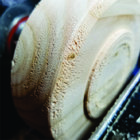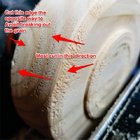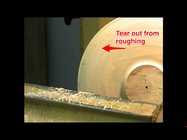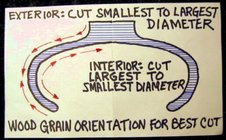The wood: 2" X 6", 20+ year old construction lumber cut into circles on bandsaw before turning. 6% moisture content.
Tools are sharp. Combination of HSS and carbide tipped lathe chisels.
Would appreciate any tips, tricks, methods, techniques, etc. to turn the end grain down without laborious and time consuming sanding to get a smooth un-pitted surface?
Tools are sharp. Combination of HSS and carbide tipped lathe chisels.
Would appreciate any tips, tricks, methods, techniques, etc. to turn the end grain down without laborious and time consuming sanding to get a smooth un-pitted surface?




